|
Olafur Eliasson has a very unmemorable name, but even if you don't recognise the name you probably know the guy. Remember when there was a large sun peering through mist in the turbine hall at the Tate Modern? That was him. Anyway, he is back at the Tate Modern until 5 January 2020. I have been twice. The first time I went it was a Sunday near the start of the exhibition and it was incredibly crowded. I've never seen an art show so busy. Many of the visitors were families. I got halfway round then retreated. I returned recently on a cold Tuesday. It was substantially calmer. The first room is a large selection of his concept models. It is always interesting to see somebody's working and on a smaller scale of the work you then experience. Sadly the exhibition has now finished so you will have to take my word for it. It took me a while to figure out what the show was. It's a fairground ride. A high-spec, colourful, interesting and almost spiritual fairground ride, complete with misty tunnel, hall of mirrors, dark room and light effects, such as the one above where you are back-lit and your shadow displayed in a number of different colours. But we are leaping ahead. It is worthwhile having a careful look around. The first room contains a very impressive tactile wall of moss-like substance covering all of one wall. On the floor are four different-sized, both in length and width, tanks full of water with wave machines. They generate waves of different frequency and it is fun watching them join and destroy each other. These easily distract you and it is easy to miss things, for example the rain machine dripping onto one of the windows. In the next room you see a convex mirror displaying an upside-down distorted view of the room you have just left, and this is what I mean about it being a high-spec fairground. You then have to queue to go down a long misty tunnel. You can barely see more than about an arms’ length in front of you and different coloured lights mean the mist changes from orange to white and yellow as you gently parade down it. I understand that you are legally allowed to murder anyone who has stopped to take a selfie while in the tunnel (there were lots, there are less now). You emerge slightly baffled to find a large sci-fiesque cylinder, which you can walk inside of. It is bedecked with mirrors that reflect and distort you. The next room has a series of light displays and then also the light effect you can see at the top of this blog post, which splits your shadow into a number of different colours. My favourite thing in the whole show though was in a very dark room. Sudden flashes of light reveal an ever-changing sculpture on top of a plinth. It shifts from looking like a pac-man ghost, to a flattened kraken and other weird shapes. It is in fact the thing pictured above. It is a fountain, and the flashes of light catch it in different shapes and imprint it onto your brain. I thought this was excellent and stayed there for quite a while enjoying it all. The final room contained a very pretentious and wordy wall taking the alphabet and exploring environmental themes. A large round table contains a construction set, hundreds and hundreds of different pieces that you can assemble and possibly, if you were minded, create a shape like the above. That was great fun. The exhibition continues outside where the ball-like device is. There was a display that I have seen before where yellow polarising light, here set up in a hall way and in the lifts, made everything appear black and white.
It was a great show. I enjoyed it.
0 Comments
There is a show at the British Museum right now called Inspired by the East, the Influence of Islamic Art. It is the kind of show that the British Museum does really well, an overview of something from history or art, giving you the context of how it was produced and what effect it has. You get the obvious direct influences, high Victorian Western images of the Arabic world like the above, but also other inspired pieces such as the tiles of one of my favourite artists, William De Morgan.
One example I really did like was this watercolour of a woman in veil and headdress (above right). It is a very striking composition, with that pyramid of red. I like her pose as well, and the general composition reminds me of a sci-fi, postapocalyptic character. I really like it when you find images that feel very contemporary in historic art. I find myself wondering about the person depicted. Got to have Islamic militaria. You get two helmets and a sword. I really like the helmets, both of them inscribed with intricate patterns on them. The shapes of the helmets really appeal to me, but what grabbed my attention (but was frustratingly unexplained) was the little chimney shape on the above left helmet. What the hell is that for? Presumably for holding some kind of plume. In addition, very interesting to see something different, that hanging decorative item is in fact a begging bowl. It is made of Coco-da-mer, a kind of nut. Don't google it, there is a sex shop of the same name. Again, there are wonderful Islamic writing and designs inscribed around the outside. I always like seeing things like this. To counterpoint this, in a display just near it were Western and modern pottery, and tableware that uses these designs and elements. The glassware was particularly attractive.
The Alhambra has long been on my list of places to visit and this rekindled my desire. I want to wander through those tiled halls. It directly inspired Lord Leighton, who had part of his house built to reflect its grandeur. You can see it, it’s call Leighton House in Kensington High Street and is well worth a visit. Underneath is its inspiration: designs for the room and the detail you can see in said room.
There was one actual carpet (above) and it is beautiful. A rich red with intricate detail of people bopping around in various ways. It is difficult to imagine this being walked on or even on the floor, so it may be that it was hung on a wall. I spent some time peering through its finely wrought details.
One of the things that occurred to me while wandering round this show was that there were lots of depictions of men at prayer or otherwise engaging in acts of faith, but I never saw one of an Islamic woman; then I rounded the corner and saw that someone else had realised this, over 150 years ago. The painting is above left. The artist in question was Osman Hamdi Bay, who was described as the most Parisian of Ottomans and the most Ottoman of Parisians. A strange accolade but there you go. The painting itself is superb. The colour contrast is excellent, the way the woman pops out of the background. Then, the intricacy of the background, the lattice over the window, the turquoise of the tiles and the mother of pearl on the table. It’s lovely and I think Bay is a new favourite of mine.
There are also some excellent modern takes on some of the classics. There is the woman above right; she references a nude, but instead she is covered in newspaper. Sadly I have failed to note both her name and the name of the painting, but it is a very striking image and I liked it very much. Similarly, there is a classic etching called the Harem of the Seigneur. The last exhibit in the show was a projected version of that picture with moving figures, castigating and criticising the original. It was done very well I thought. A show worth seeing and I really enjoyed it. |
Archives
June 2024
Categories |
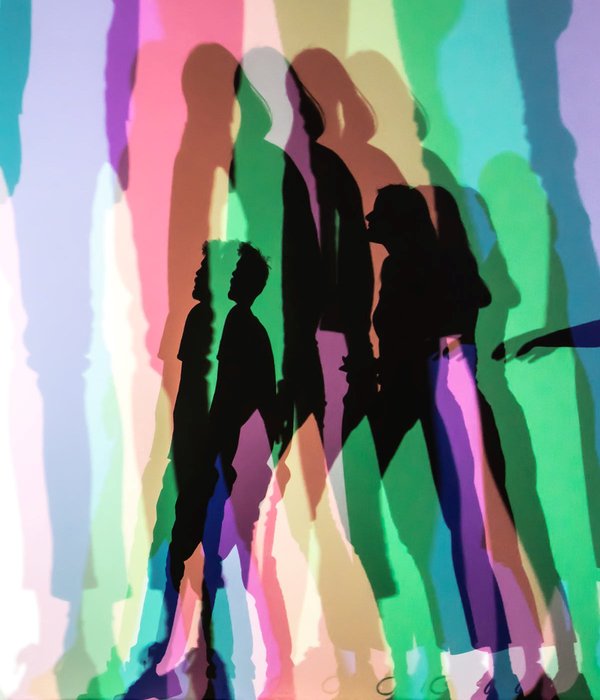
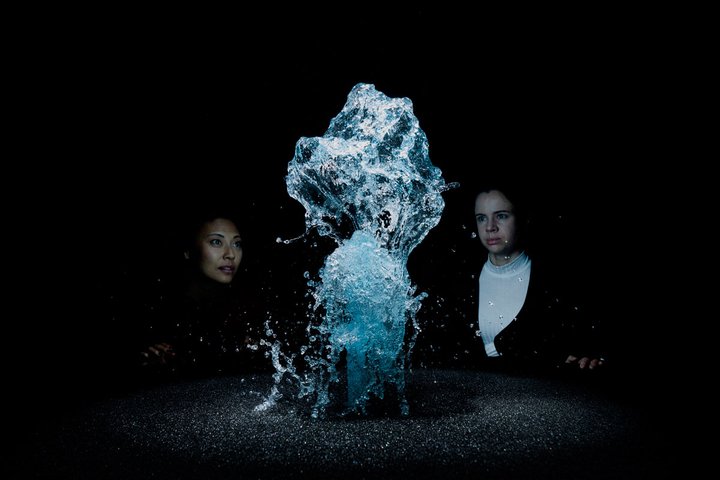
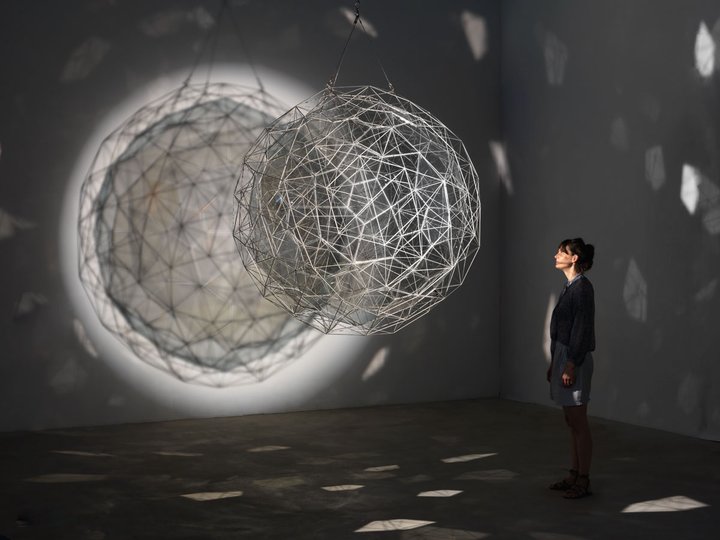
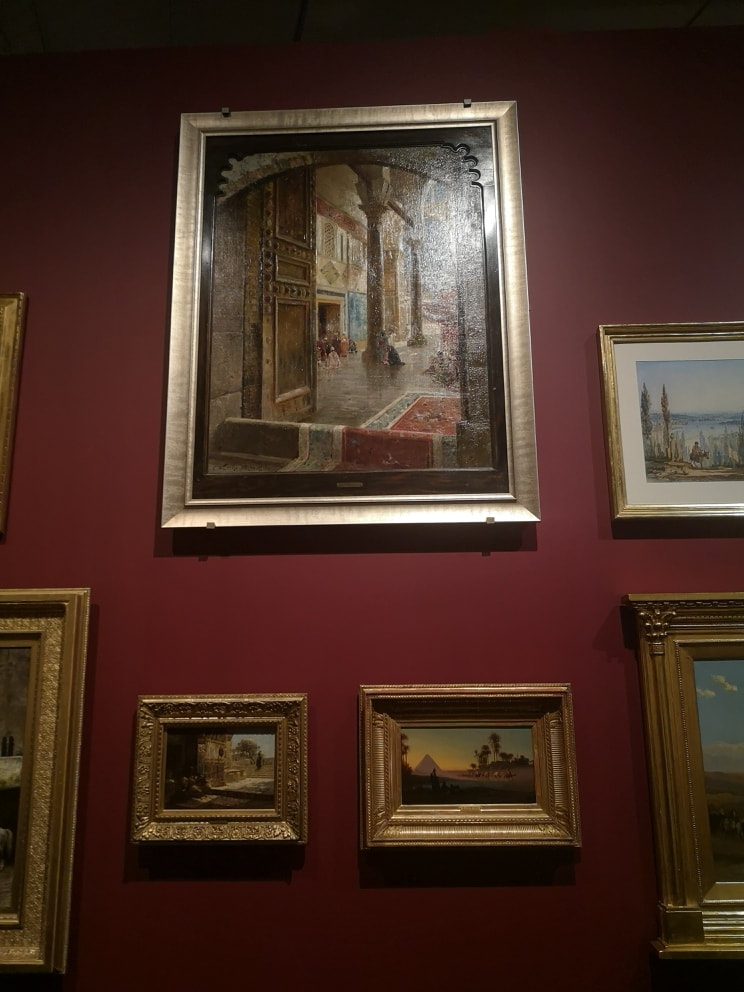
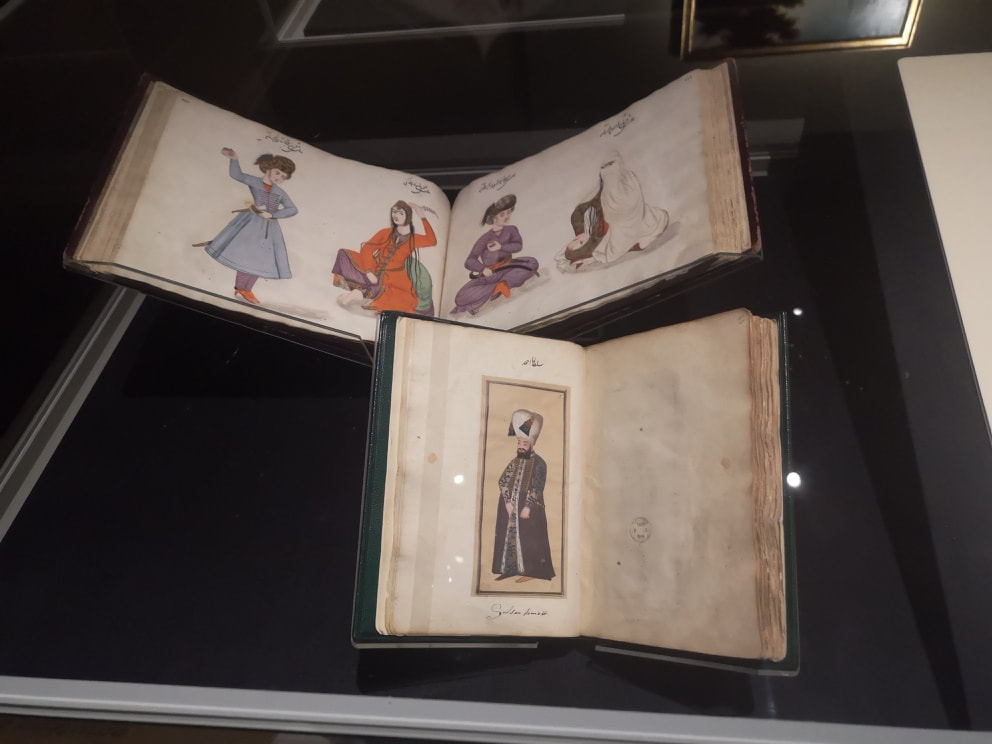
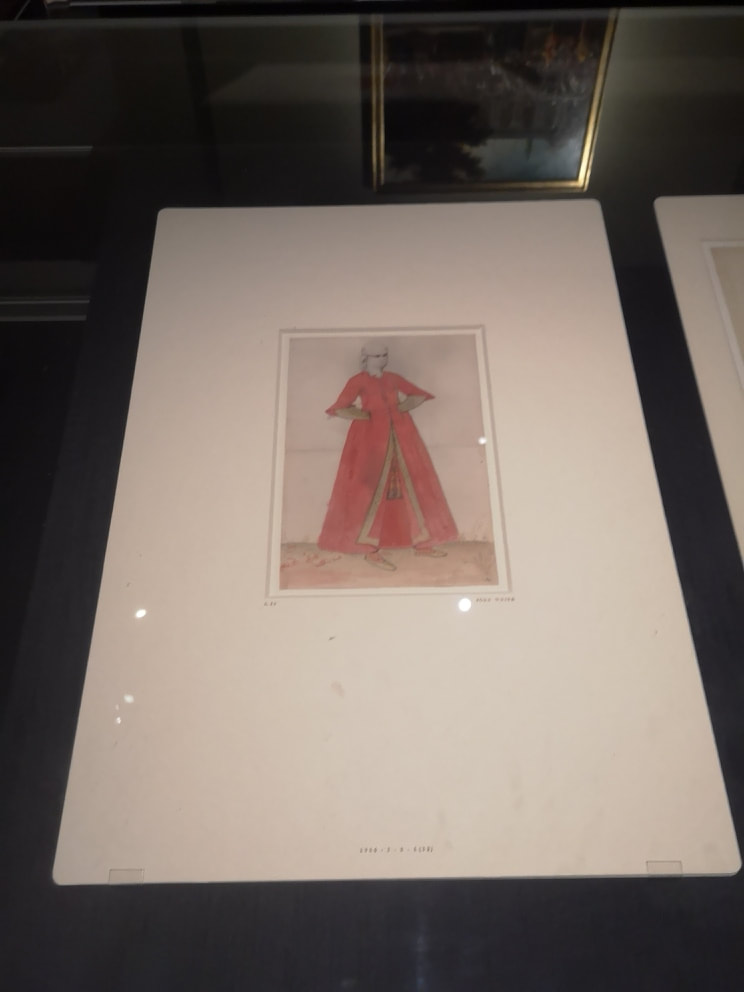
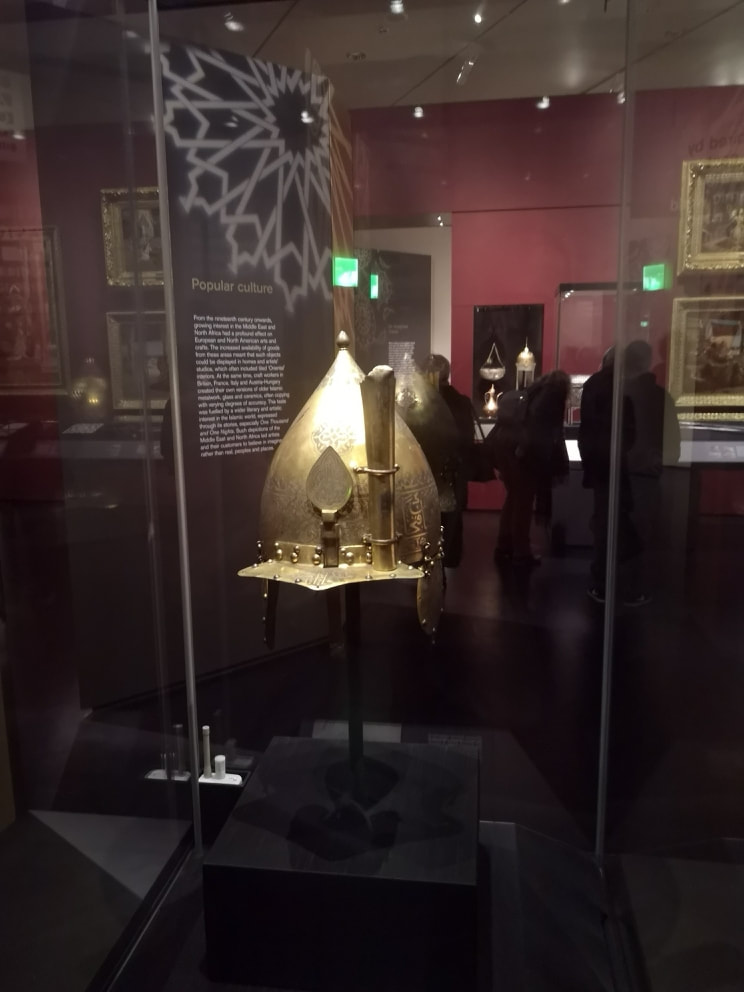
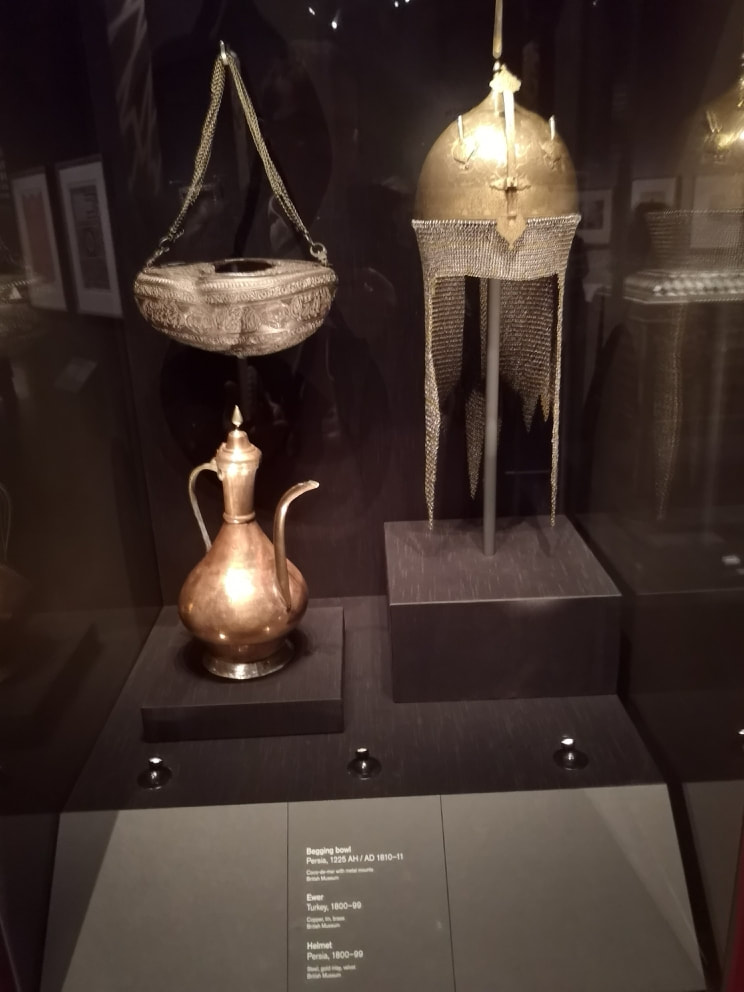
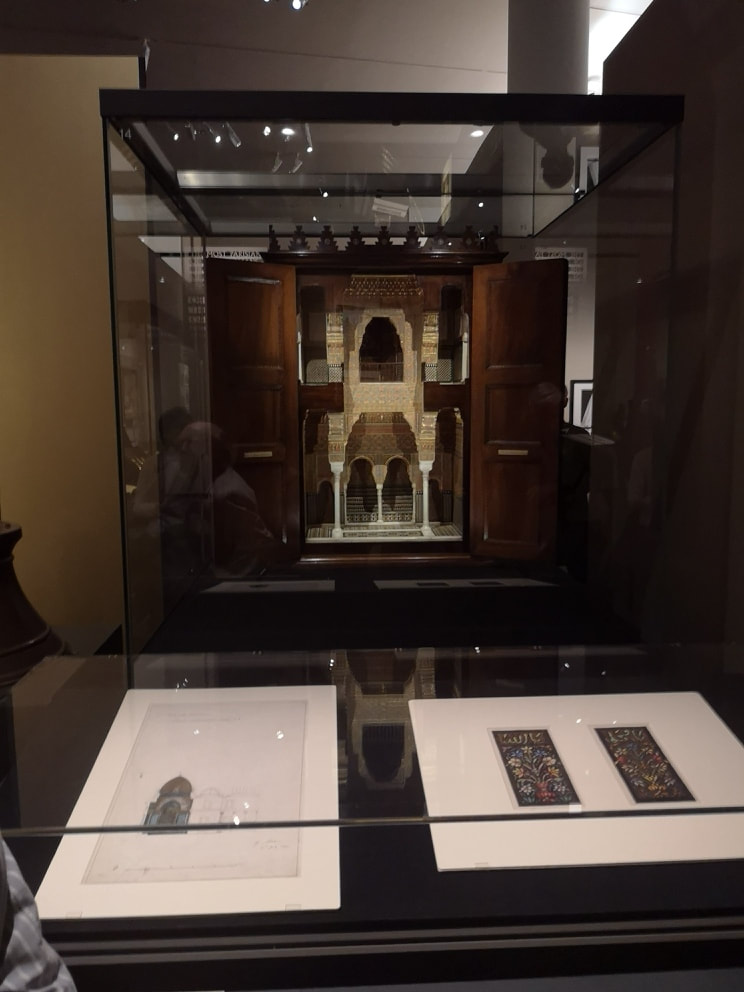
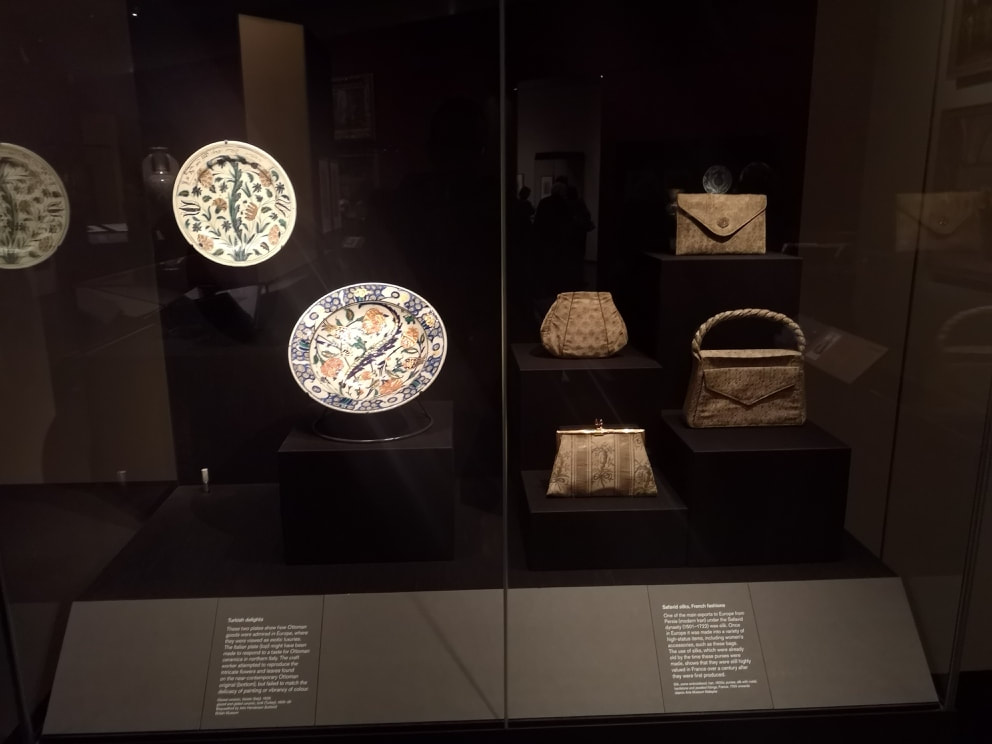
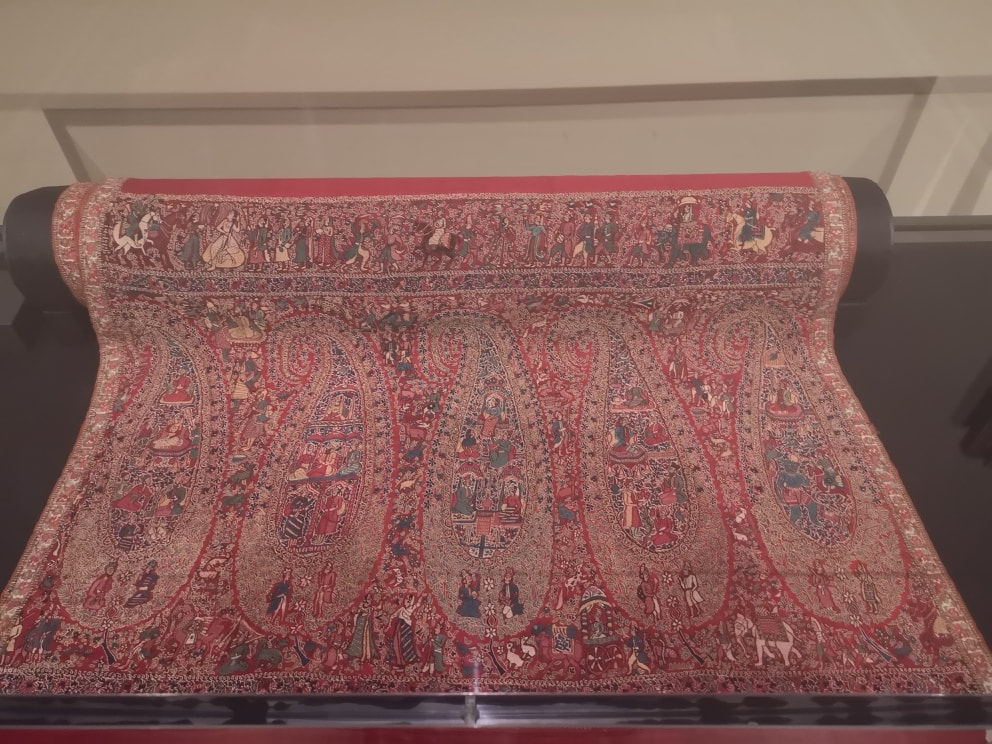
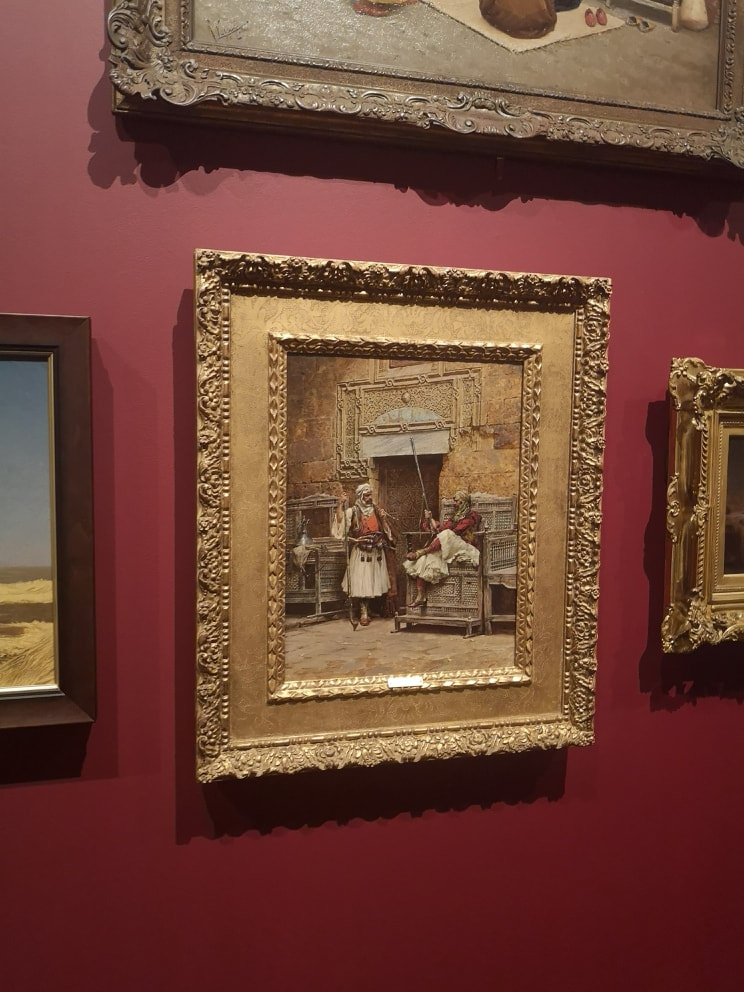
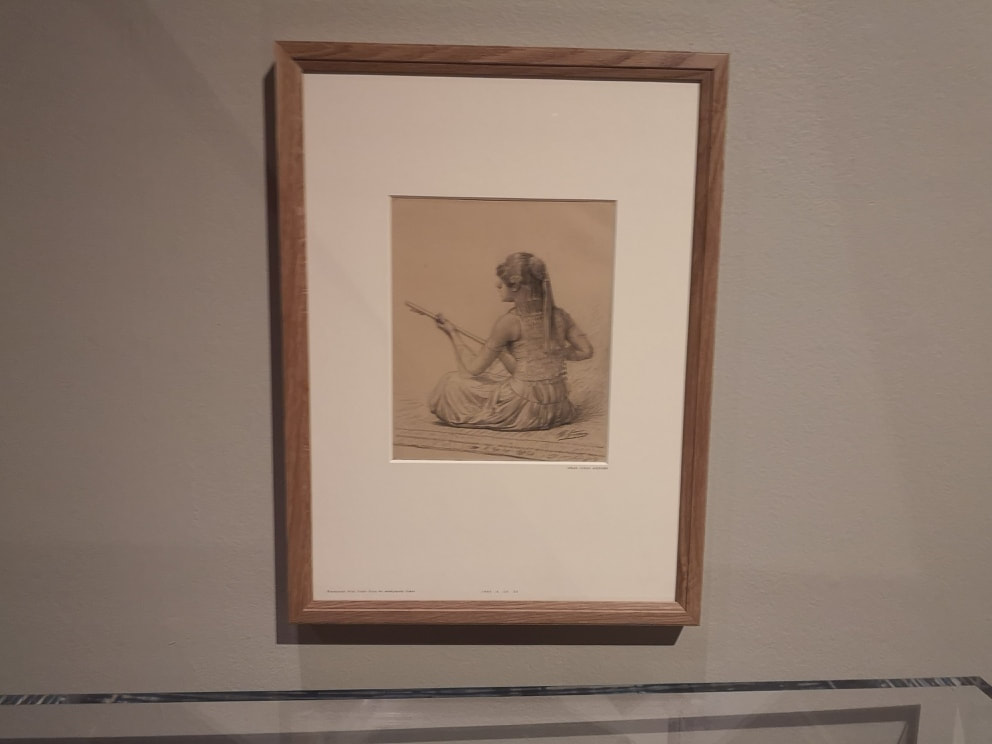
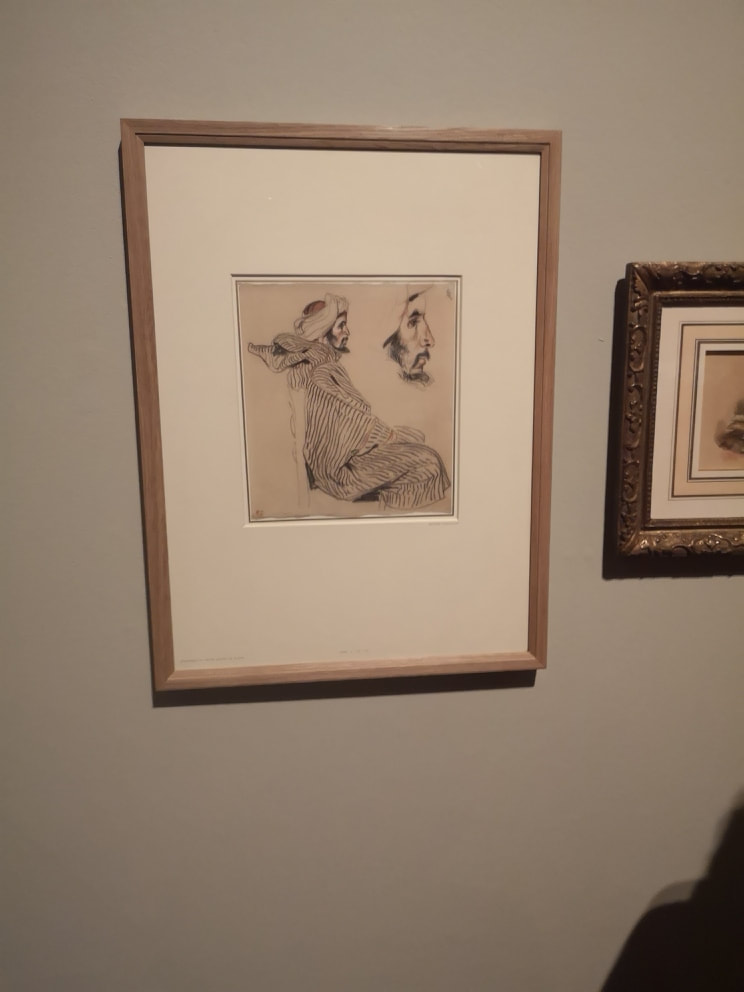
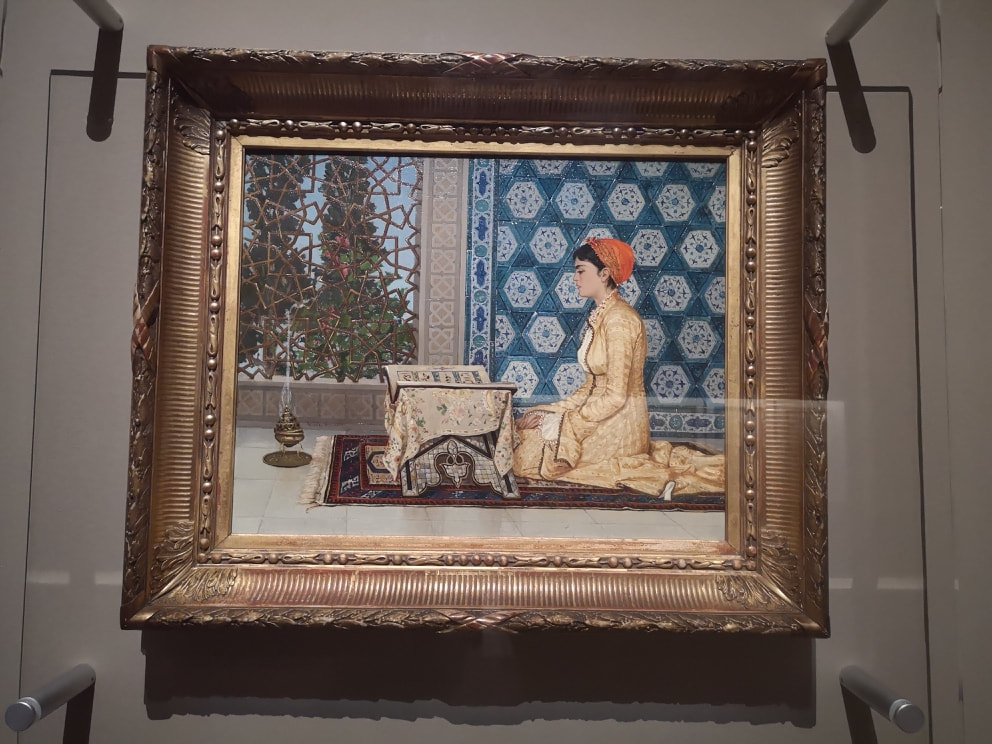
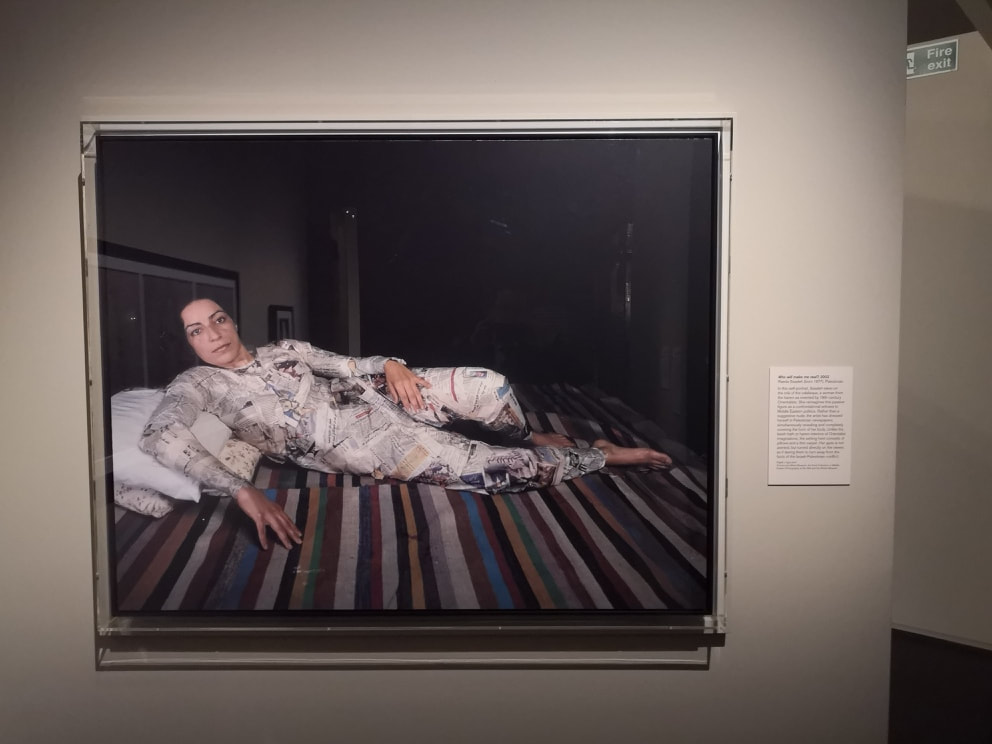
 RSS Feed
RSS Feed